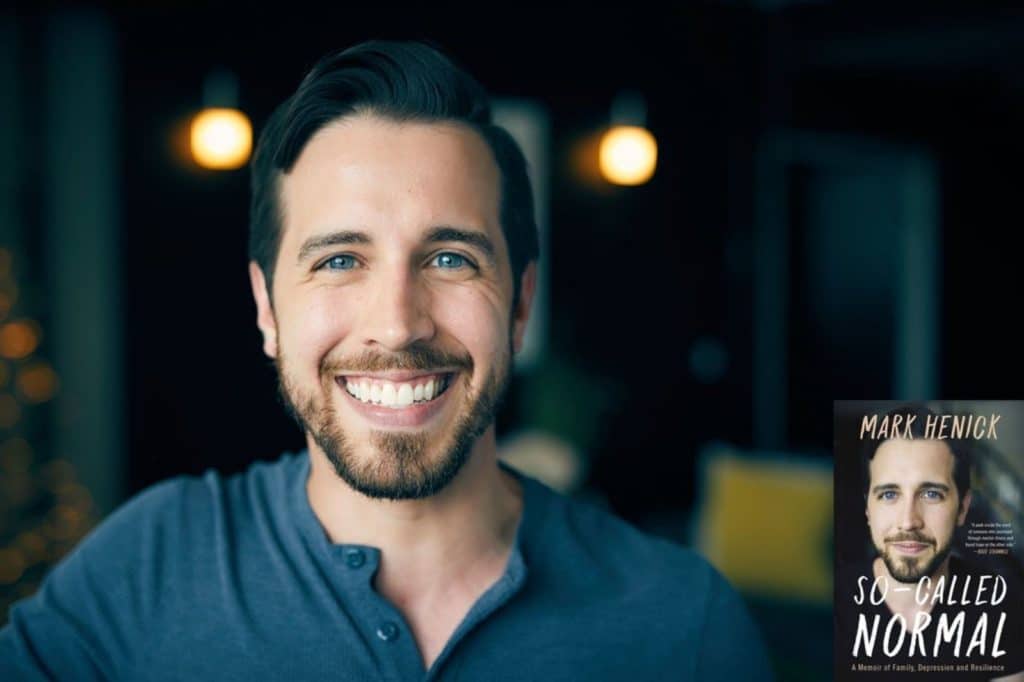If you’ve already picked up Mark Henick’s book, “So-Called Normal,” you’ve likely noticed how familiar his story is. In his memoir, Henick describes many experiences typical of a teenage boy – challenging family dynamics, his first crush, and navigating middle school. However, as familiar as those childhood experiences are, what stood out to me as a social worker and Clarity employee was his struggle with mental illness.
“jump, you coward!”
After a short prologue, Henick dives into the thick of his story. He pulls the reader into what he thought would be the last moments of his life: with only the heels of his feet keeping him on the edge of a bridge, barely holding onto the rails, and failed by the systems that were supposed to catch him the half-dozen times he tried this before.
A driver nearby yells, “Jump, you coward!” and reinforces that there is no other answer; that he tried and failed. That the only way to end his pain and suffering was to let go.
But, much like his book suggests, that wasn’t the end of his story. It was only the beginning.
so-called normal
On the outside, Henick was a pretty average kid. He was raised in Cape Breton, a small island in Nova Scotia, Canada, was close to his family, and enjoyed school. His mental health began to decline after his parents separated, and his mother and siblings moved in with the man who would assume the role of his stepfather.
His new home environment was very unstable; Gary, his mother’s new boyfriend, had suffered a traumatic brain injury that resulted in extreme mood swings and violent outbursts. The frequent fights and on-again-off-again relationship between his mother and Gary meant that they often stayed with a relative until things had cooled off, after which they would move back into Gary’s home.
They struggled financially, too, further deepening the stress and dysfunction at home.
the risk
Recent studies suggest that high-poverty households can increase the risk of suicide in youth. We know how highly stressful home environments – such as those where chronic and persistent poverty, substance abuse, domestic violence or family conflicts, and parental mental illness exist – affect children. Children and youth are 37% more likely to die by suicide when the county they live in has a poverty rate of 20% versus those where the poverty rate is 5% or less.
This is especially relevant to our work at Clarity, where 65% of the children in our care use some form of subsidized health insurance to cover their stay or aren’t insured at all. Low-income communities also often lack adequate mental health resources for families that cannot afford treatment, or treatment comes at the cost of not putting food on the table.
Suicide is the second most common cause of death among young people between the ages of 10 and 24; things like a history of depression or other mental illnesses and easy access to means to follow a suicide plan to completion increase the risk of suicide in children and youth. Sexual orientation and cyberbullying are big factors, too.
When we look at the big picture of kids’ lives today, we’re faced with a dangerous cocktail of variables that pressure young people to believe suicide is the only way out.
In his book, Henick uses the term “frequent flyer” to describe the frequency with which he was hospitalized. The term is typically applied to returning patients – those children who are considered difficult and problematic. However, these are the children most in need of a higher level of individualized care.
Research by Boswick, et. al. revealed that of all participants who died of suicide, four out of five people who survived their first index suicide attempt (an index attempt is the first attempt to receive medical attention) died within a year. This statistic brings a new meaning to the term “frequent flyer” – that this may be our last and only chance to make a difference in that child’s life.
the system
Henick’s disappointment with the mental healthcare system was a repeating theme in his book; disconnected services between each referral, poor support to improve his home environment, and hit-or-miss helpers made it challenging to overcome his illness. We understand all too well the logistical difficulties of the system we work in, and are often the first to point out how it could be better.
The reality is that it’s easier said than done. The way to efficiency is riddled with challenges, such as billing so many different health insurance providers, differing practices and conflicting processes between referral partners, incompatible information systems – the list is long and the fixes difficult.
Despite the system’s inefficiencies, mental health treatment works, and more than 13 million people depend on it each year to manage their mental illnesses. Research by Albano et. al. shows that 81% of children with anxiety will respond to treatment (combination of cognitive-behavioral therapy and medication) in just 12 weeks; after 36 weeks, 86% of children with depression will improve.
While we have a long way to go in terms of efficiency, our mental health system is saving lives every single day.
the difference
A man who for 12 years remained a stranger was the person who made the biggest difference in Henick’s life. He saw a young man in a dark place and didn’t hesitate to help. His quick actions, words of compassion, and refusal to give up on someone he had never met saved that young boy who let go of the railing but didn’t make it to the ground.
Our mental health workers wield an unmistakable power: the power to be the one who stands out, changes a child’s perspective, and begins their healing journey. The journey has been long and challenging for Henick, but his resilience inspires hope and the belief that all children do well when they can.
If you want to know more about Henick’s story of resilience, be sure to join us at Claritycon2021 on November 5, 2021! You can watch a recording of his “So-Called Normal” session for only $25 or join us live virtually or in-person at KLRN.










